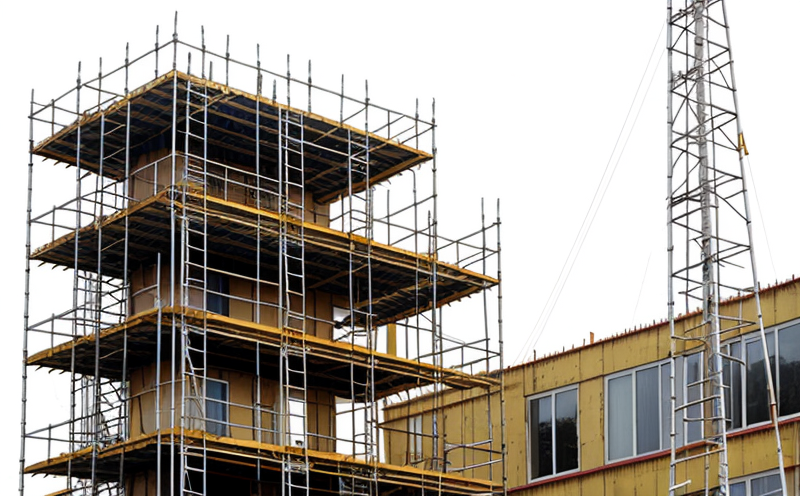Scaffolding safety inspection
In the construction and building industry, scaffolding plays a crucial role in providing safe access to heights where conventional means of working are impractical. However, given its critical function during various phases of construction, it is imperative to ensure that scaffolding remains structurally sound and free from defects that could compromise safety. A scaffolding safety inspection serves as an essential quality control measure to identify potential hazards and ensure compliance with relevant standards.
The inspection process involves a thorough examination of the scaffold's components, including but not limited to, bases, uprights, bracing, planks, and guardrails. The primary objective is to verify that the structure adheres to prescribed safety guidelines set forth by regulatory bodies such as OSHA (Occupational Safety and Health Administration) in the United States or BSI (British Standards Institution). This includes checking for proper anchoring, secure connections, and adequate load-bearing capacity.
Given the dynamic nature of construction sites, scaffolding must be capable of withstanding varying levels of stress. During inspections, engineers pay close attention to signs of wear and tear such as corrosion, deformation, or deterioration in materials like steel, wood, or aluminum. Any discrepancies found during these evaluations necessitate immediate attention from both maintenance personnel and project managers alike.
Additionally, the safety inspection encompasses non-structural components critical for worker protection such as fall arrest systems, guardrails, toe boards, and personal protective equipment (PPE). Ensuring that all workers are equipped with appropriate PPE is fundamental to reducing accidents. Furthermore, it ensures compliance with local regulations regarding the installation and use of these devices.
Regular inspections not only help maintain compliance but also contribute significantly towards enhancing worker safety by preemptively addressing issues before they escalate into serious incidents. By adhering strictly to established protocols outlined in international standards like ISO 14065:2018 or ASTM F1383-19, organizations can demonstrate their commitment to upholding high standards of occupational health and safety.
It is important to note that scaffolding inspections should be conducted regularly rather than solely focusing on periodic evaluations. Continuous monitoring allows for the identification of minor problems early on which might otherwise develop into major concerns over time. Regular maintenance practices coupled with rigorous inspection procedures form a robust defense against potential accidents, thereby fostering a safer working environment.
For instance, consider a scenario where scaffolding is being used to facilitate the installation of large prefabricated panels during building facades renovation work. During this phase, additional loading due to heavy machinery could place extra strain on certain sections of the structure. An experienced inspector would meticulously examine these areas for any signs indicative of overloading or structural failure.
Another critical aspect often overlooked is the environmental impact of scaffolding operations. While constructing buildings, temporary structures like scaffolds can have significant effects on surrounding ecosystems if not managed properly. Thus, incorporating sustainable practices into scaffold design and construction methods becomes increasingly important in today’s green building initiatives. Compliance with these measures ensures that projects meet not only safety requirements but also ecological considerations.
Regular inspections serve as a vital tool for maintaining compliance throughout the project lifecycle, ensuring that all parties involved are aware of any potential risks associated with scaffolding usage. By integrating regular reviews into standard operating procedures, organizations can effectively mitigate hazards and promote safer working conditions across various sectors within the construction industry.
Applied Standards
The scaffolding safety inspection adheres to several international standards designed to ensure structural integrity and worker protection. Among these are:
- ISO 14065:2018 – This standard provides guidelines for the calibration, maintenance, and use of measurement equipment related to scaffolding safety inspections.
- ASTM F1383-19 – It specifies requirements for fall protection systems used in construction, which include inspection criteria necessary for determining their safe operation.
- EN 12076:2004 – This European standard sets out performance and test methods applicable to scaffolding components such as steel tubes and couplers.
- BSI PAS 723 – A British Standard publication that offers best practice recommendations for the management of temporary works including scaffolds.
These standards provide a framework for conducting inspections systematically, ensuring consistency across different jurisdictions while accommodating local variations where applicable. By adhering to these guidelines, professionals can ensure their work meets both national and international benchmarks for safety and quality assurance.
Benefits
- Enhanced Workplace Safety: Regular inspections help identify potential hazards early, preventing accidents before they occur.
- Compliance Assurance: Ensures that scaffolding complies with regulatory requirements and international standards.
- Prolonged Lifespan: By addressing minor issues promptly, the lifespan of scaffolding can be significantly extended.
- Cost Efficiency: Early detection of problems reduces the need for costly repairs or replacements later in the project.
In addition to these tangible benefits, regular inspections contribute to a culture of safety within an organization. When workers see that management prioritizes their well-being through proactive measures like scaffold checks, it fosters trust and encourages adherence to safety protocols across all aspects of construction operations.
Why Choose This Test
- Expertise: Our team comprises highly trained professionals who possess extensive experience in conducting scaffolding inspections following recognized best practices.
- Comprehensive Coverage: We offer a full range of inspection services tailored to meet specific project needs, ensuring no detail is overlooked.
- Custom Solutions: Understanding that every construction site has unique requirements, we provide customized inspection plans suited to individual projects' complexities and challenges.
- Timely Reporting: Our reports are delivered promptly after each inspection, providing actionable insights directly to decision-makers involved in the project.
Selecting our scaffolding safety inspection service offers peace of mind knowing that you're partnering with experts committed to excellence. With us, you ensure not only compliance but also contribute towards creating a safer working environment for all personnel associated with your construction projects.





